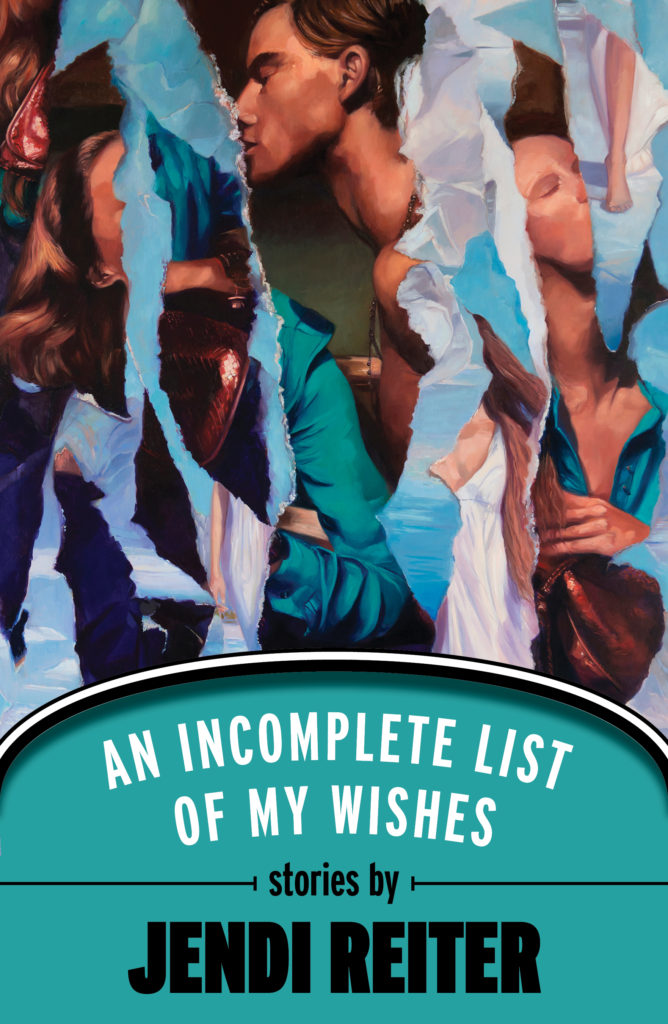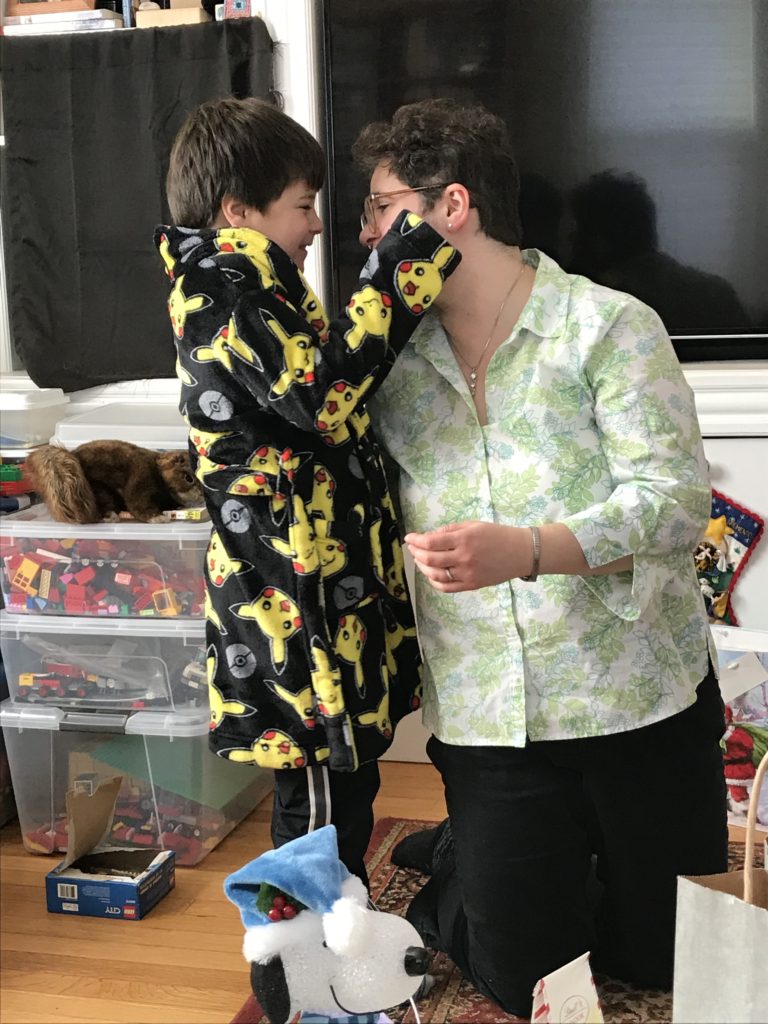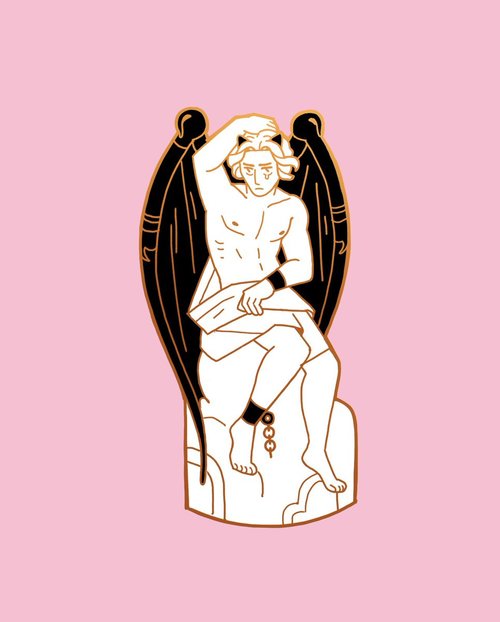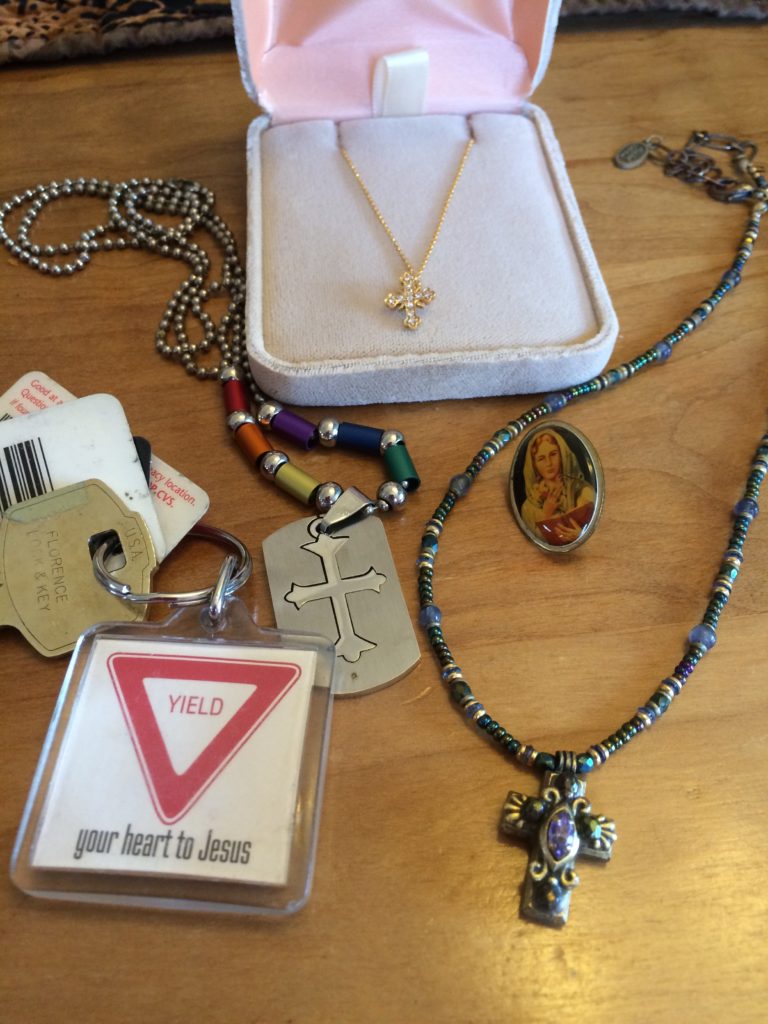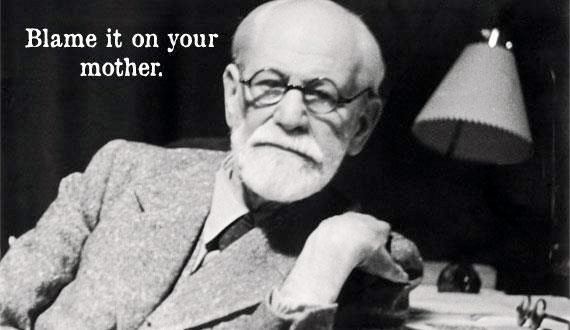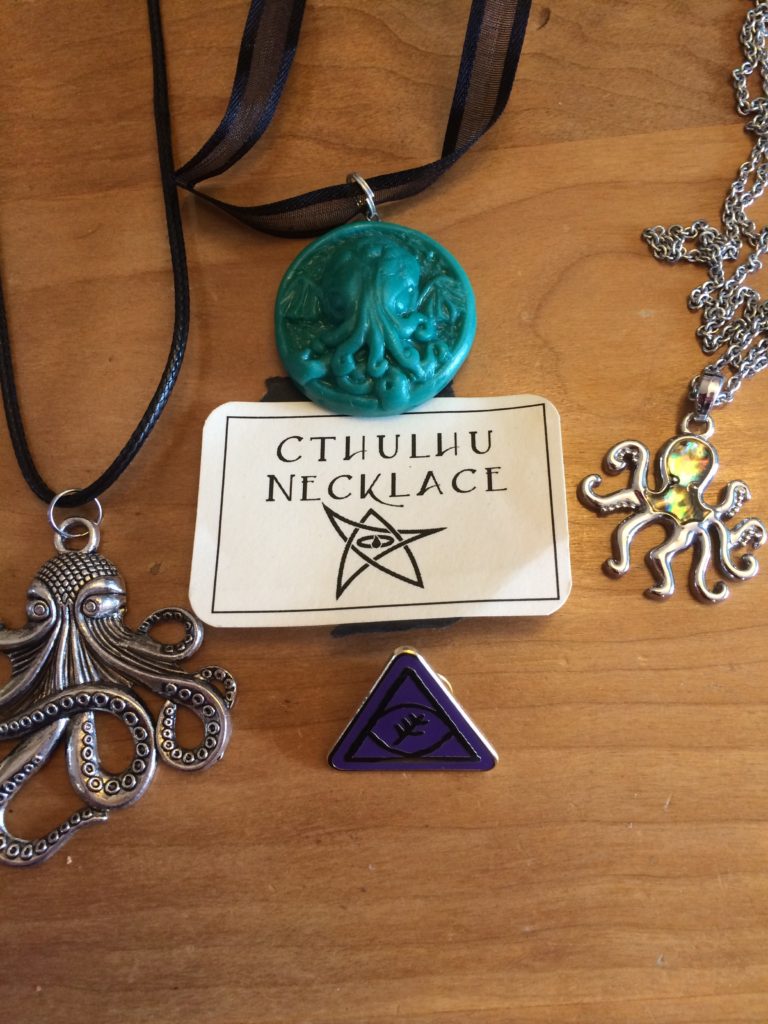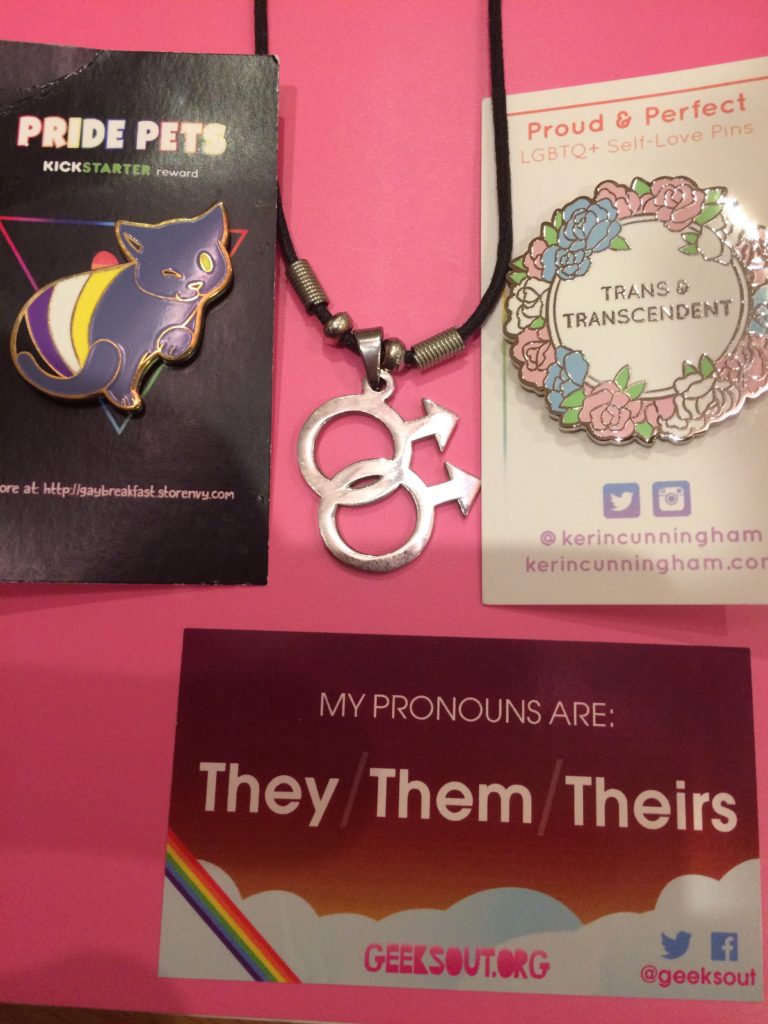Happy Advent and Hanukkah to my readers! This year, to honor my ancestors and the victims of anti-Semitic violence in Pittsburgh (and elsewhere), I’ve begun lighting Hanukkah candles again. As I did at his age, the Young Master loves the ritual of selecting the colors for each night, and seeing the little flames cheer up the early darkness of these winter evenings. Pro tip, this grapefruit peeler is great for extracting the wax stubs from those tiny candle holder cups.
I’ve been thinking a lot about visibility of minority identities, and the compromises involved in translating one’s self into an alien discourse. “They” is a grammatically awkward pronoun precisely because life outside the gender binary is supposed to be unthinkable. Then, too, there is the question of why recognition matters. Who is our audience? Are we signaling solidarity to others in the tribe, or are we seeking public validation of an identity that we ourselves are insecure about?
Speaking of visibility in unlikely places, if you grew up in a progressive household in the 1970s, you probably remember Dr. Bronner’s liquid Castile soap. I spent many hours soaking in the bathtub, puzzling over the philosophical tracts that covered every inch of the bottle label in tiny print. These quirky paeans to the “All-One-God-Faith” included quotes from Thomas Paine, the lyrics of “To Dream the Impossible Dream”, and the timeless advice: “Don’t drink soap! Dilute! Dilute! OK!” At the social justice blog The Establishment, Casey Kleczek gives a thumbnail history of the still family-owned brand in “A Soap Label to Save the World from Future Hitlers”:
Bronner’s Moral ABCs first developed in the Heilbronner home in the Jewish quarter of Laupheim, Germany where for 70 years Emanuel and his family tirelessly fine-tuned the first-ever liquid castile soap, and held the prevailing belief that “You don’t mix politics and soap.”
This stalwart rejection of incorporating Bronner’s then Zionist ideology into the family business by his strict orthodox father and uncles inspired him to emigrate to America in 1929, where he would be free to create a company of his own ideation, and mix politics and soap as he wanted.
In America, he dropped the “Heil” from his last name and became a successful consultant for American cosmetic companies. He fell in love, got married and had three children. But his life came screeching to a halt with a postcard in his father’s largely censored scrawl: “You were right.”
For years he had been trying to convince his parents to follow him to the United States amidst Hitler’s rise to power. He managed to securely help his sisters out of Germany but was unable to convince his parents, who held the prevailing belief of the time that “Hitler would be a thing of the past.”
Within the next year, the Heilbronner soap company was nationalized by the Nazis, and the family was deported and killed in Auschwitz and Theriesenstadt. Not long after, Bronner’s wife passed away.
After the death of his parents and wife, a switch flipped. His very aliveness was a burden, a reminder of the fact that his parents died while he was living the American dream. He carried the weight of their deaths like a talisman with a gnawing question, “What are you going to do about it?”
The guilt and sorrow frothed into a frenetic madness. Rather than slip into mourning, he was seized by a singular charge: teach the world the Moral ABCs. All the sources of unwelcome philosophy from his youth were channeled into this hodgepodge Talmud. Mohammed, Rabbi Hillel, Jesus, Buddha, and even Thomas Paine were some of its more notable players. And while the particulars may have been unintelligible, the guiding principle was a call to rise above religious and ethnic differences and unite on “spaceship earth.”
The article goes on to give an even-handed account of the impact of Bronner’s zeal on his family, whom he neglected in his quest to spread his message. After much financial and medical turmoil, things turned around for the Bronners during the natural-products craze of the 1960s, and the rest is history.
At the Huffington Post, writer and theater performer Travis Alabanza argues that white supremacy plays a role in erasing gender diversity, in the article “Non-Binary People Aren’t a New Phenomenon”. Since the mainstream media has taken notice of trans issues only recently, there’s the implication that these identities are a new trend, and therefore shallow and insubstantial. But gender-bending identities have been named and given space in a variety of cultures, from South Asian hijra to the bakla of the Philippines. “I do not think it is a coincidence that things are often seen as ‘just beginning to exist’ when they are placed within frames of the West and/or whiteness. Did we mean to say ‘non-binary was new’, or did we just mean to say ‘non-binary is now something I see more white, western, middle class people talking about’.” Alabanza worries that this new framing will lead to a narrowing of possibilities, so that nonbinary becomes a cloned look: “skinny, able-bodied, white, and masculine of centre.”
A welcome variety of literary personalities, including Northampton’s own Andrea Lawlor and Jordy Rosenberg, are on view in Peter Haldeman’s NY Times profle “The Coming of Age of Transgender Literature”. These authors, along with other rising stars like Akwaeke Emezi and Kai Cheng Thom, discuss how genderqueer literature lends itself to a “magpie” approach to genre, with narratives that incorporate fables, poetic devices, faux-scholarly footnotes, and other postmodern techniques.
While literary innovation may be flourishing in the Pioneer Valley, traditional test-driven education is doing its best to stamp it out, writes Ryan Boyd in his LA Review of Books article “Students Want to Write Well; We Don’t Let Them” , reviewing John Warner’s new book Why They Can’t Write: Killing the Five-Paragraph Essay and Other Necessities (Johns Hopkins University Press, 2018). Students’ lack of competence or passion for writing can be blamed on “how we have tried to industrialize and centralize education since the Reagan era while simultaneously withdrawing the resources that allow teachers to create environments where students can thrive.” Teaching to the test–the formulaic composition assignments on topics no one cares about–stifles students’ curiosity and burdens them with economic anxiety from a young age. Students are unmotivated, not because they’re lazy and coddled, but because they intuitively understand that these assignments are merely grooming them to become corporate cogs and neoliberal consumers.
The five-paragraph essay, bête noire of writing professors, encapsulates this: a straitjacket format never seen in the wild, where actual writers have to be flexible, creative, and intuitive based on genre and audience, the five-paragraph model is wholly artificial. And since the only person who reads it is an adult who holds a grade over the writer’s head, this example of “education folklore” (Warner’s term) socializes students to obsess about grades (which research shows are detrimental to learning and merely increase anxiety) and view The Teacher as the only arbiter of quality, who judges everything according to a strict rubric. All that matters is the final score, which can be standardized, rather than the kind of rich, in-depth, guiding feedback that only experienced teachers can provide their students. In overcrowded, over-tested classrooms, students come to see every assignment as just another flaming hoop to jump through.
No wonder I did poorly on the AP English exams!
Just for fun, check out humorist Daniel Ortberg’s “Potential Names For My Short-Lived Queer Suiting Company That Will Fold Under Mysterious Circumstances Eight Months After Launching”:
If there’s one thing I know to be true in this world, it’s that anytime I click on an article that says something like “Five AWESOME Companies Making Androgynous/Non-Binary/Genderfluid/Queer-Bodied Suits for the Butch/Masc-of-Center/TenderBlenderBabyBoi In Your Life,” if said article is more than half a year old, fully half of those links will be dead and the companies in question will be decisively, yet mysteriously, out of existence. (With the exception of Bindle and Keep, it would seem; may their doors never close.) I don’t quite know why this is! My guess is that it’s a relatively small client base, suits are generally kind of expensive, especially if you want a custom fit, and the butch/stud/transmasculine/et al market covers a lot of different body types. But that doesn’t stop us from launching another round every couple of years, because hope and ignorance of markets spring eternal (see The Toast).
Create your own company name from your birth month and day! Mine is “Wolf & Ranger”. We make cowboi hats…
